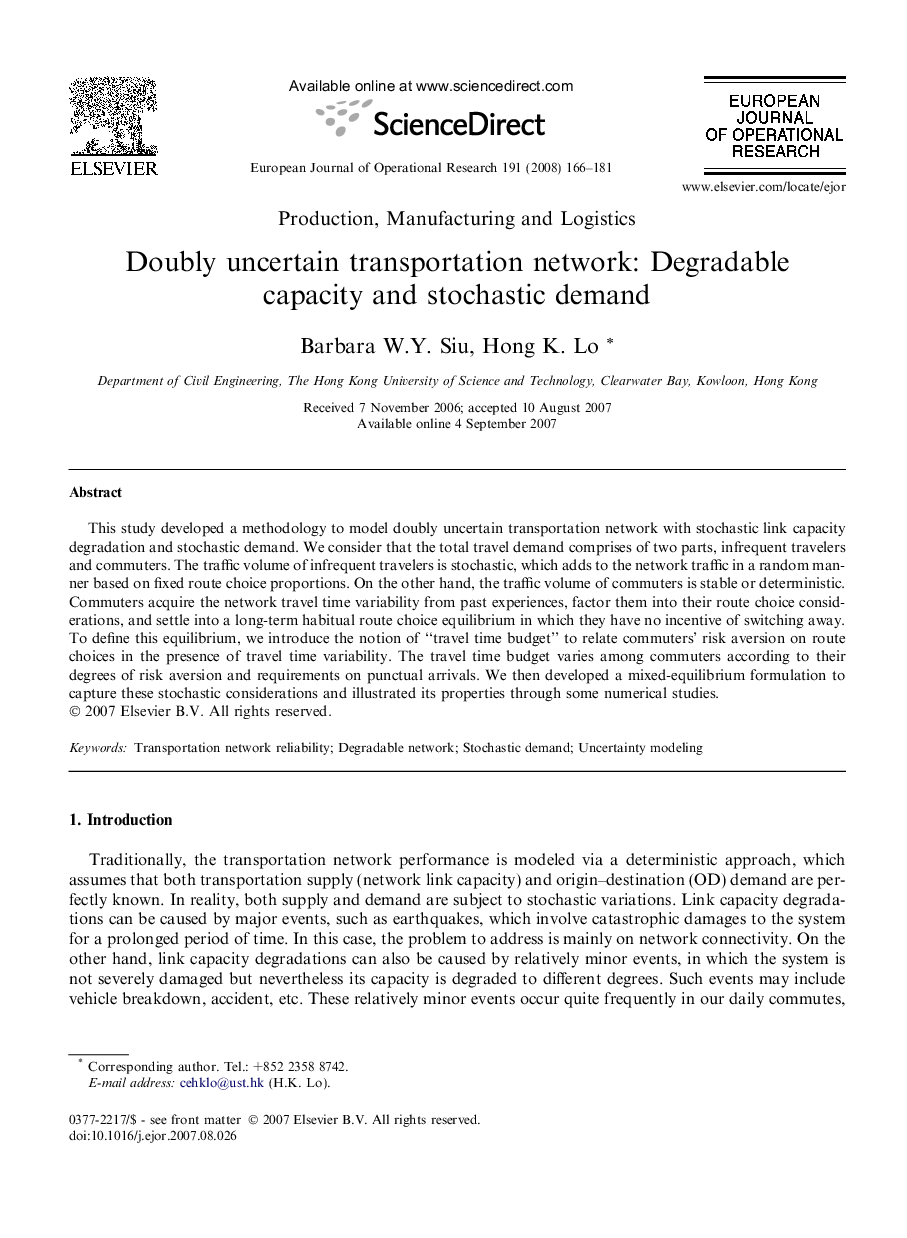| Article ID | Journal | Published Year | Pages | File Type |
|---|---|---|---|---|
| 481367 | European Journal of Operational Research | 2008 | 16 Pages |
This study developed a methodology to model doubly uncertain transportation network with stochastic link capacity degradation and stochastic demand. We consider that the total travel demand comprises of two parts, infrequent travelers and commuters. The traffic volume of infrequent travelers is stochastic, which adds to the network traffic in a random manner based on fixed route choice proportions. On the other hand, the traffic volume of commuters is stable or deterministic. Commuters acquire the network travel time variability from past experiences, factor them into their route choice considerations, and settle into a long-term habitual route choice equilibrium in which they have no incentive of switching away. To define this equilibrium, we introduce the notion of “travel time budget” to relate commuters’ risk aversion on route choices in the presence of travel time variability. The travel time budget varies among commuters according to their degrees of risk aversion and requirements on punctual arrivals. We then developed a mixed-equilibrium formulation to capture these stochastic considerations and illustrated its properties through some numerical studies.
